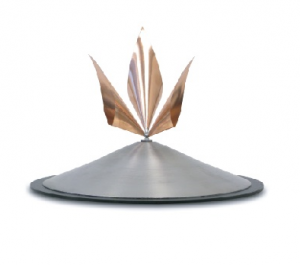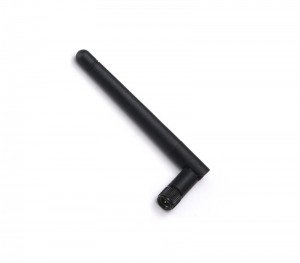Multipath Propagation is a common occurrence with wireless devices as we discussed in last week’s #TechTuesday. To recap, multipath occurs when multiple signals from the transmitting antenna reach the receiving antenna via either a direct line of sight or by reflecting off of objects such as trees, walls, or furniture. These signals converge on the receiving antenna and can cause destructive interference, which can reduce the signal strength or cause the signal to drop out completely. Before you clear the office of all its furniture or cut down that tree in your backyard, there is a simple way to reduce the effect of multipath and the answer is spatial diversity.
Spatial diversity is usually achieved by having two or more antennas connected to separate radios inside a wireless device. In the picture below there are two receiving antennas that are both picking up the signal from the transmitting antenna. In the real world both antennas will be picking up multiple signals due to multipath and there is a chance that one of them is in a “dead” zone. However, with two antennas the receiving device will have an option to choose the radio and antenna that is receiving the best signal.
This is why Wi-Fi routers have two, three, or even six antennas on them. The router is receiving multiple signals from the multiple antennas, but is only using the one that has the strongest signal. Having six antennas on a Wi-Fi router might seem like overkill, but in today’s wireless world people would do just about anything to make sure they have the best signal possible. However, is there a way to combine the same spatial diversity achieved with multiple into one antenna? The answer is Yes! Every antenna manufactured by MP Antenna has built in spatial diversity that helps eliminate multipath and creates a stable connection in real world environments!
MP Antenna utilizes patented technology that gives the antenna a unique three dimensional shape. Most antennas you see are dipole antennas, which are mostly always made from straight wire. For the dipole antenna to receive a signal, the radio wave has to “hit” this single piece of wire. This means the effective area for a dipole antenna to receive a signal is quite small. With a MP Antenna, you have a larger effective area in which the signal can be received due to the three dimensional shape as seen in the picture below.

The MP Antenna creates spatial diversity by having this three dimensional shape. By having spatial diversity, the probability of the MP Antenna receiving a strong signal and not being in a dead zone due to multipath is greater than that of a dipole and many other antennas. One portion of the MP Antenna could be in a null, while another portion could be receiving a usable signal. This is just not possible with any other antenna, making a MP Antenna the best solution to overcome multipath issues. Fixing multipath problems is only one of many advantages using a MP Antenna has over the competition. Check back for the next #TechTuesday where we will start discussing more!
MP Antenna, LTD. (https://www.mpantenna.com) is the exclusive developer and manufacturer of advanced Multi-Polarized antennas that are well-suited for a range of applications including public safety, wireless broadband systems, WiFi, WiMax, video monitoring systems, 3G, CDMA, GSM, PCS and LTE. The company’s product line improves signal penetration and connectivity in obstructed deployments providing increased data throughput, enhanced voice clarity and multi-path mitigation. MP Antenna’s products are protected under numerous US patents with many US and foreign patents pending. MP Antenna is privately held and designs and manufactures its products at their headquarters located near Cleveland, Ohio, USA.

